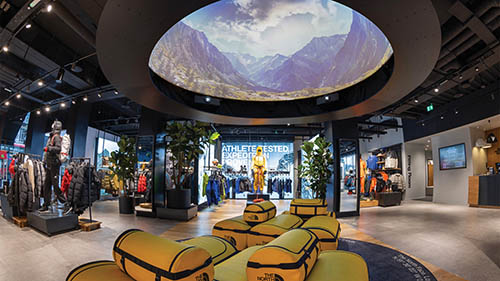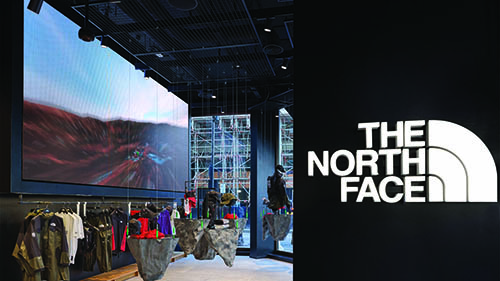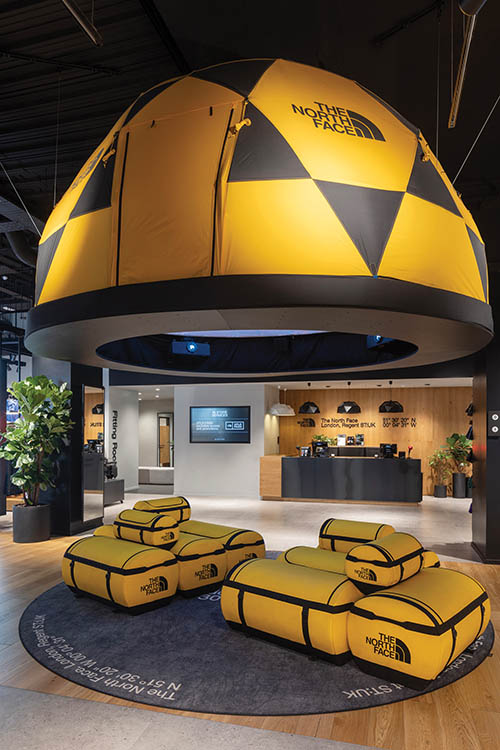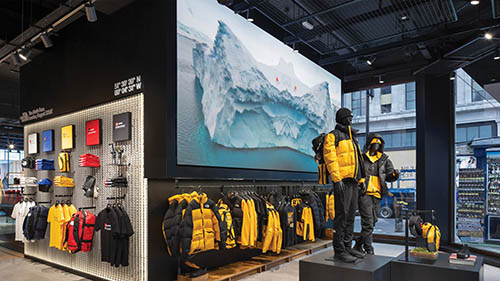— By Jaime Bettencourt —
The human side of ‘smart stores’ in 2025.
Technology is powering personalized store experiences that outperform e-commerce convenience. Capital One research reports that brick-and-mortar stores capture 80% of impulse purchases, a clear signal that physical retail remains unmatched for discovery and engagement.

2025’s winning retailers won’t just add screens and apps. Instead, they’ll enhance what algorithms can’t replicate: personalized discovery, human connection and sensory engagement. By focusing on these uniquely human elements, tomorrow’s retail innovations will make shopping more intuitive and digital.
Making “Chance” Encounters Count
The art of creating these more intuitive shopping experiences starts with “controlled serendipity” — using technology to spark discovery within comfortable, familiar spaces. Think of stores that maintain consistent layouts but use digital retail signage to highlight rotating collections based on community trends. Even the atmosphere plays a role: Our 2024 Holiday Music Survey, for example, reveals that thoughtfully curated store music drives repeat visits, with 44% of shoppers more likely to return to retailers that balance familiar and unexpected sounds. This principle — blending comfort with discovery — guides every aspect of modern retail.

This balance extends beyond music into every corner of the store. One month, stores might feature local artisans’ sustainable goods; the next, limited-edition collaborations — all woven naturally into shoppers’ familiar paths. Successful retailers understand that meaningful purchases stem from creating the right context, not relying on chance encounters.
Moment Marketing Reinvents Impulse Buying
The traditional impulse buy is getting a digital upgrade. Instead of relying solely on checkout displays, retailers are creating personalized discovery moments throughout the store. 1WorldSync’s 2024 Consumer Product Content Benchmark Report states the number of shoppers who always use smartphones for product research while in-store doubled from 2023, with consumers now using their devices on more than half of shopping trips (54%).

Smart retailers are turning these mobile-first behaviors into opportunities by localizing content along the shopper journey. Through strategic placement of digital media that educates and inspires, stores can increase both dwell time and wallet share. When customers pick up or return online orders — which leads to additional purchases for 40% of shoppers — stores can suggest relevant items based on past browsing. This approach transforms spontaneous purchases from random encounters into perfectly timed discoveries.
Smart Associates, Smarter Service
According to Medallia research, 61% of consumers are willing to spend more for personalized experiences. In 2025, store associates will deliver on these expectations by becoming tech-enabled brand ambassadors who blend digital insights with authentic service.
For shoppers who opt into loyalty programs, this means interactions that feel more helpful than promotional. Associates can access customer-approved preferences to suggest new arrivals that match stated interests or proactively address previous fit concerns. This evolution transforms traditional sales conversations into genuine advisory moments, fostering stronger employee engagement where technology enhances rather than scripts the human connection.

For retailers plotting their 2025 technology investments, focus on solutions that enhance, not replace, human experiences. Those who succeed will see technology not as a showcase of innovation but as a powerful tool for creating the personalized, friction-free experiences that drive loyalty and sales.
— Jaime Bettencourt is senior vice president of global account management and marketing at Mood Media. She has a robust track record for leading teams and leveraging custom, complex in-store marketing, media and technology solutions for Fortune 100 clients in the retail space.

